eCommerce Product Page Do's & Don'ts
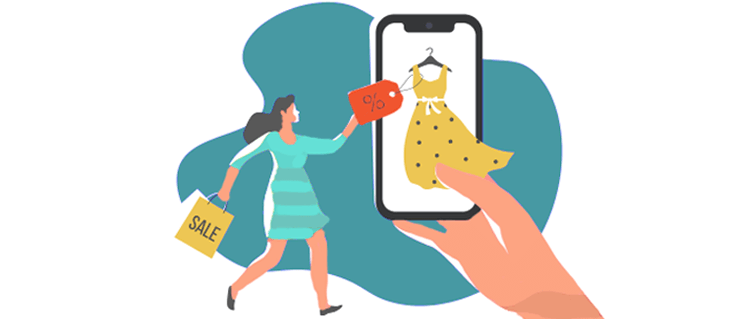
eCommerce Website Design Tips for Product Pages
When it comes to your eCommerce store, it can be easy to want to focus on just your homepage. But when you consider what it takes for someone to make a purchase, some of the most frequently visited pages are product pages.
The product page design on your eCommerce site is where the magic happens. This is where people make the decision to press that “Add to Cart” button and buy your stuff! So how do you get them to make the jump? Here's our top tips to make a product page that converts.
Do Post Multiple Pictures of your Products
Giving people a good idea of what they could be buying is really important and high quality product photos are a way to do it. When you show off multiple angles, uses, and colors of your product, clients can better imagine themselves using, wearing, or enjoying your product.
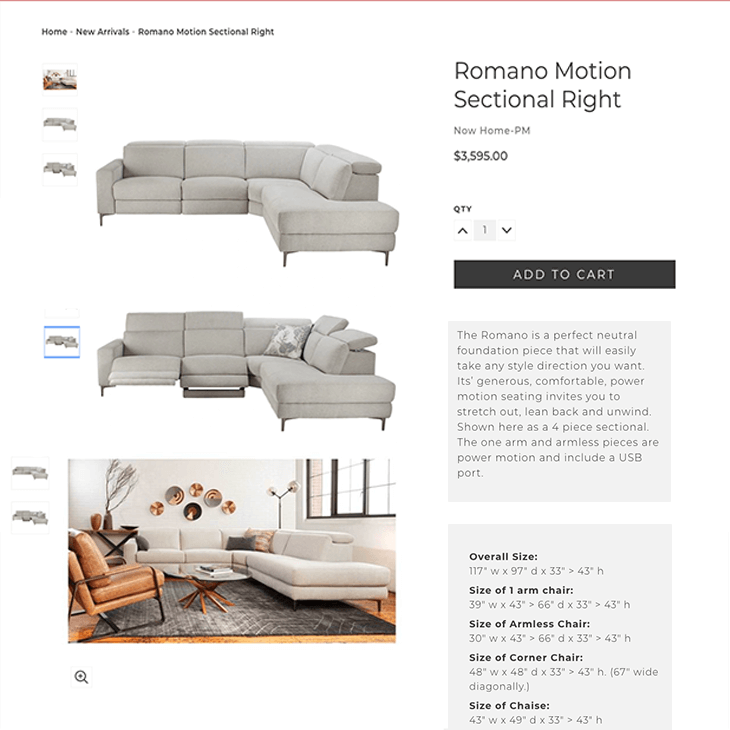
On Kasala Furniture’s site, they do a great job showing off their pieces from different angles, in different positions - like with the footrest up, and even as lifestyle imagery to help the user better imagine the piece in their own home.
Don’t Post if They’re Poor Quality
We’ve told you before… begged you… please use high quality photos. If you’re going through the effort of making the effort to create an awesome product and website, why use poor quality photos? Even if you have to use your iPhone on portrait mode, phone photos are better than grainy low quality photos that don’t show off your product.
Do Offer Related Products
If you’ve got a wide selection of products - offering ones that either compliment the current product or are similar can help the user be sure to find exactly what they’re looking for.
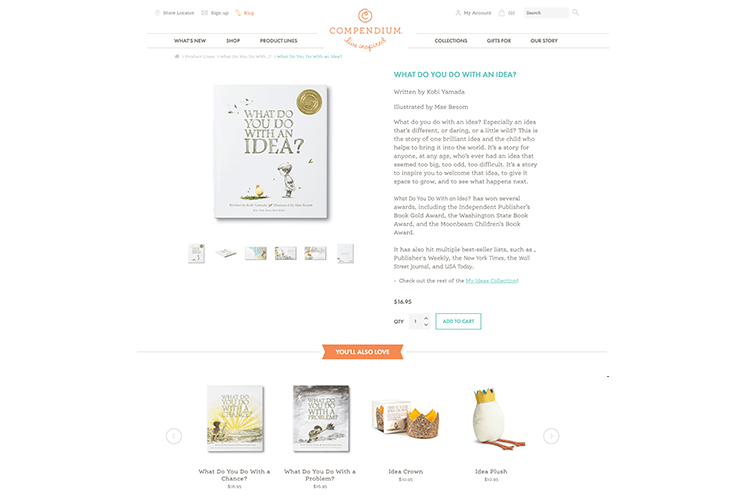
Our friends at Compendium sell a lot of books and have several collections. To make it easy for their users to find similar products, they pull in products from the same collection - like their “What Do You Do With An Idea?” book that resulted in two more subsequent books, a journal, and other fun accessories,
Don't Just Offer Random Products
Pulling in any random product isn’t very helpful to your user, so make sure that you tag ones in the same category so the user can actually make use of the products that you are sharing.
Do Share Information in a Visually Interesting Way
Listing out your info can be a make or break for some users. Sometimes if the specs aren’t shown clearly or in an accessible or interesting way, then users might miss them and choose another product.
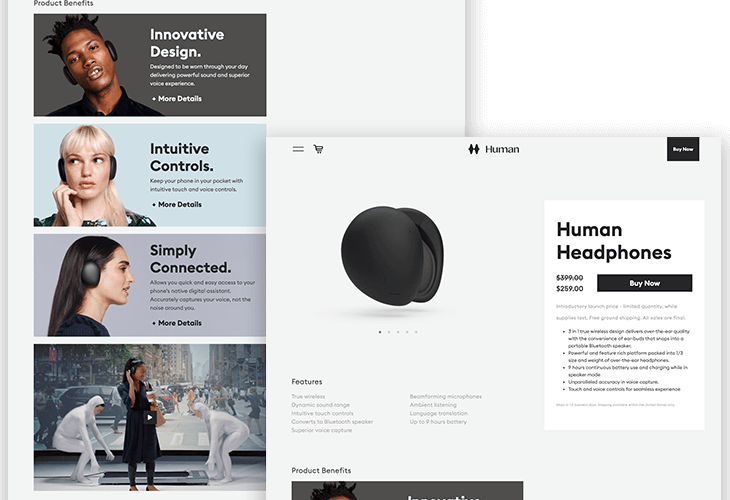
On our site for Human Headphones, we broke down the specs of the project as well as benefits and other desirable features to be highlighted and capture the users interests. We designed it using color blocks similar to the homepage to give a cohesive look and feel.
Don’t Provide Unnecessary Information
There are some questions that one out of every thousand customers may want to know the answer to, but that doesn’t mean you need to crowd your product page with that information. You can link to FAQ’s, your customer service line, or even an email to give people the opportunity to ask more about a product rather than cluttering your page with unnecessary info.
Do Make it Custom to Your Brand
If you’ve got a unique selling point about your product, make sure you’re showing it on the product page. Whether it’s customizable product options, adding monograms or decals, or even just the color, make sure there’s an option to choose it.
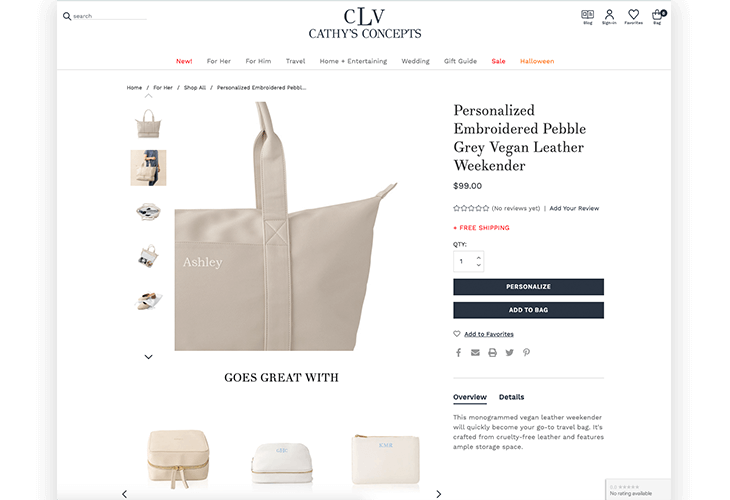
Our friends at Cathy’s Concepts offer free customization on all of their products, so we helped install an App that allows for a monogram and preview for all of the monogram right on the product. This is definitely a huge selling point for them, so making sure we could see that option is and users could try it out can help make the sale.
Don’t Add Unnecessary Product Options
Decision fatigue is real so if you’re asking users to make a lot of choices about their product, it might result in too many decisions and they might leave. Making some of the choices for them can smooth out the process.
Do Consider a Landing Page
Sometimes a product page isn’t enough to tell your story. There are some limitations that can come on some platforms, so we’ve been recommending utilizing the headless commerce approach and really telling a story with your content by creating a landing page around a product or collection. You can guide the user down a narrative and then ask them to buy the product after they've gotten further information about a specific collection or product.
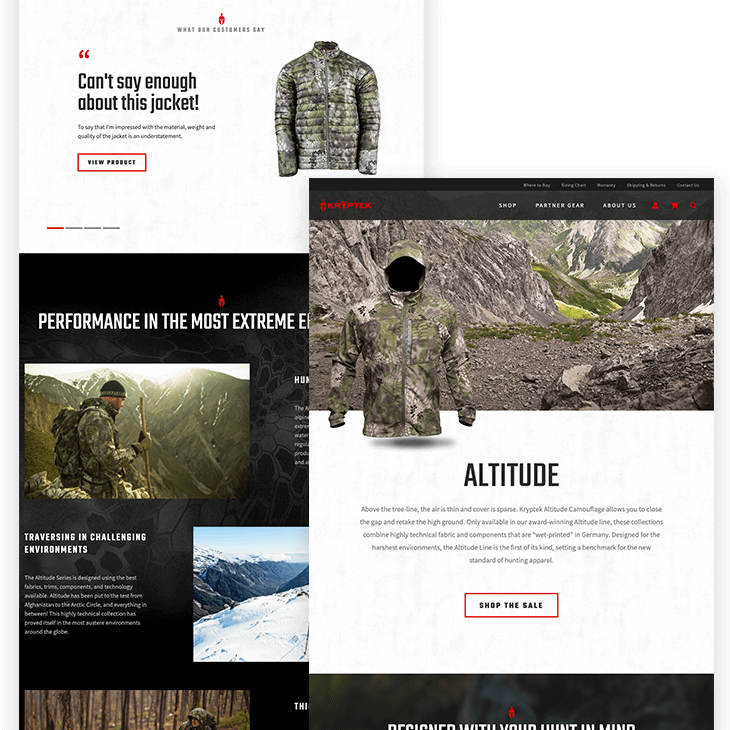
We built out a landing page for our friends at Kryptek to send ads, emails, and other promotional materials surrounding their Altitude Collection. This collection is highly tested and one of the best in the industry, resulting in a higher price point, so the goal with the page is to tell the story of testing, the high quality material, and share reviews of elated customers. From this landing page we link off to the product pages with several calls to action.
Don’t Confuse Your Users
You probably don’t need a landing page for all of your products, so if you’re creating multiples it might confuse users. Pick a couple of products or collections you’d like to feature and make landing pages for those.
Are you ready to up your eCommerce product page game?
We’re the partner to help you take your eCommerce business to the next level. Our team of designers, developers, strategists, and digital experts have over 15 years of experience helping businesses like yours grow. Want to learn how? Fill out our contact form, send us an email at [email protected] or call us at 206.384.4909!